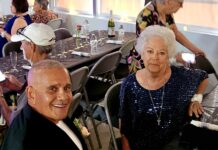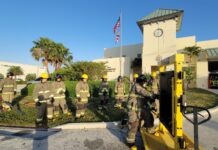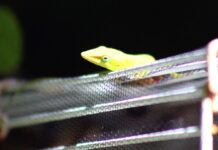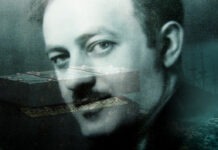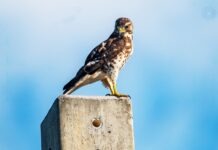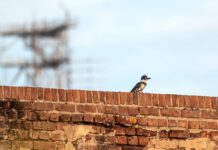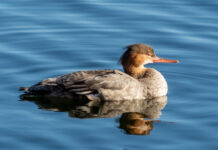Elizabeth Bishop most likely started her poem “Florida” before she ever came to Key West, when she’d only visited the Gulf Coast. She probably finished it some time after spending her first winter on the island in 1937. It was first published in her collection “North & South,” in 1946. (Her second volume of poems, which included the poems from “North & South,” won the Pulitzer Prize.)
There’s a line in “Florida” where she describes “unseen hysterical birds who rush up the scale/every time in a tantrum.” It’s a line I vaguely think about every time I read the poem. But my friend Chris Bergh got a little more direct on Facebook the other day asking, “Which unseen hysterical bird rushed up the scale in a tantrum, I wonder?”
Over the last few years I’ve been on the committee a couple times for the literary applicants for month-long residencies at The Studios of Key West. It’s a tough writing assignment, people having to make the case for why they should be some of the talented few selected. Most applicants make some kind of reference to wanting to walk the streets Ernest Hemingway walked, viewing him as the pinnacle of Key West literary history. I always gave bonus points to anyone who mentions Hemingway, but then goes on further to mention Elizabeth Bishop. I gave double bonus points to anyone who mentioned Bishop without Hemingway. (I gave triple bonus points to anyone who mentioned Tom McGuane.)
Hemingway’s great power as a writer, outside of being a stylist who single-handedly redefined the narrative tone of American literature, was his authoritative voice, the way he could convince you he knew the real lowdown on anything he wrote about – bullfights, war heroes, smugglers, Conchs. His protagonists were noble, manly men who came off as thinly veiled stand-ins for himself, or at least the self he believed he’d be if he were in those situations.
Bishop was a great counterpoint to that, a keen-eyed observer who wasn’t trying to convince you of anything. She saw, described, evoked; she anchored her work to its deeper meanings in non-explicit ways.
She was also more interested in some of the town’s weirdness – the local charity hospital, the life and work of the Key West sign painter/folk artist Gregorio Valdez, the way the prisoners at the jail were allowed to go home in their black-and-white striped uniforms for most of the day. She befriended Pauline Hemingway after the divorce. She danced the rhumba at Sloppy Joe’s wearing a Hermes scarf and a tight white dress.
She got Key West without pretending to own it because she was curious.
Bishop was not exactly prolific. She only published 101 poems during her 50-year career. But man, did a lot of those poems hit.
She also wrote quite a few letters from here and a substantial number of essays about here.
Bishop’s best known poem is “One Art,” which opens with “The art of losing isn’t hard to master,” and midway through describes how “three loved houses went.” One of those houses was, no doubt, the one she owned on the 600 block of White Street. It was purchased several years ago to preserve it as a historic landmark by the Key West Literary Seminar and is currently in the late stages of a meticulous renovation. (Full disclosure: my wife is president of the KWLS board.)
“Florida,” though, is up there in the first flight of poems people talk about when they discuss her work, though I may have a Floridian’s bias. Chris Bergh no doubt has one, too, as he wrote in his post, “Ms. Bishop had Florida’s, and particularly the Keys’, number.”
Years ago, when I first moved to Key West, I spent a couple months working for a local advertising company and wrote some copy for a brochure for a guest house where I used the word florid to describe the grounds. My boss made me change it, telling me the word was too fancy and no one would know what it means. It didn’t matter to her when I pointed out that the name of our state was just the word florid with a capital F and an a tacked on the end. (Not that I hold decades-long grudges over minor disagreements or anything.)
So every time I read the opening line of Bishop’s “Florida” – “The state with the prettiest name” – I feel a little thankful to her.
Besides her reference to the bird in a tantrum she has a number of other bird references in the poem. She describes the state “full of long S-shaped birds, blue and white,” as well as “Tanagers embarrassed by their flashiness” and “pelicans whose delight it is to clown.” She also describes the mosquitos “hunting to the tune of their ferocious obbligatos,” an obbligato being the part of a musical score you are obliged to play in any performance.
The point of poetry to me has never been about pinning down its definitive meaning. It’s the impression a poem leaves in passing that matters most. But I’m always torn between art and fact when people write about birds. Some take a lot of liberty when they do, freighting birds with a lot of metaphorical meaning that really has nothing to do with them or their lives.
Poets and writers often use birds as metaphors for freedom, but birds are far more driven by biological imperative than we are. Being obliged to drag yourself halfway across the planet twice a year – without no mechanical aid – doesn’t feel like freedom to me. It’s not something a bird does on a whim.
I could go on. But I’m only saying, just because you have poetic license doesn’t mean you don’t have poetic responsibility. Bishop does pretty well by birds.
Getting back to Bergh’s question – which unseen hysterical bird rushed up the scale in a tantrum? – I have been somewhat stumped.
My wife suggested belted kingfishers, kings of the avian tantrums, at least in this state. But they stay in a narrow range and don’t really rush up a scale.
Bergh offered me a beer if I could name what bird he was thinking of, and I mentioned something about prairie warblers and how they rush up a scale. Bergh said that was, in fact, the bird he was thinking of.
My problem, though, is that to me prairie warblers sound too melodic, too clear-noted, to be having a tantrum. So I’m going to keep cogitating on this for a while, listening to Florida’s soundscape, re-reading Bishop’s poems. Maybe I’ll come up with a better answer. Maybe it will always be a mystery for me.
And now I realize I may have just talked myself out of a beer.
Flamingos in the Keys: What’s the Deal?
Mark Hedden will give a talk on Saturday, March 16 at 1 p.m. entitled ‘Flamingos in the Keys: What’s the Deal?’ in the Toppino Nature Chapel at Key West Tropical Forest & Botanical Garden. Admission for the speaker is free for members, $5 for non-members.
